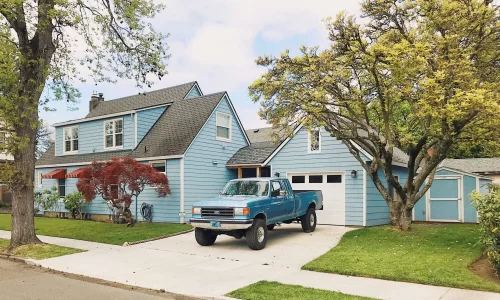Hoarding is a difficult problem to deal with as it is a mental illness, which can bring serious consequences for the hoarder and their neighbors.
Here we go through what to do if there is a hoarder in your community association.
What is a hoarder?
Hoarding is a mental illness, according to the American Anxiety and Depression Association, a hoarder has:
- Difficulty throwing away their possessions;
- Anxiety while trying to discard items;
- Not knowing what is necessary to keep or how to store your belongings;
- Constant suspicion that someone will touch your items;
- Difficulty organizing goods;
- Difficulty categorizing assets;
- Possible obsessive thoughts and actions;
- Fear of discarding an item and needing it in the future;
- Check the trash frequently to find out if some objects were accidentally discarded;
- Feeling of oppression or shame for your possessions;
- Possible functional deficiencies, such as loss of space, social isolation, problems in the family, problems in marriage, and financial difficulties.
How can you tell there’s a hoarder in the community association?
Usually the first sign of hoarding in a condominium building is a bad smell in the corridors. In an HOA it is probably when objects start to pile up outside. Neighbors will often notice first, and they will get in touch with their board or manager.
What are there dangers of hoarding?
Compulsive hoarding is a problem for the hoarder, and can be very distressing for their loved ones as they cannot get rid of possessions. In the community it can pose a fire hazard as paper, and cardboard is highly flammable.
Trash, decaying food and dirty clothes can lead to a bad odor, mould and pest infestations.
Finally, if their possessions start to pour out of the hoarder’s home it can become visible and start to affect property values.
What can the board do?
If residents have got in touch with the board and let you know there is a compulsive hoarder in your community, then you need to follow up on those reports. Once you have done that you can follow these seven steps.
Check your governing documents
The first step is to check your governing documents. It is illegal to ban a hoarder from living in the community association. However, you can prohibit behavior that is dangerous to other members of the community.
As hoarding can be dangerous, it fits into this category. Having these provisions in your governing documents can help when you’re dealing with this issue.
Conduct an inspection
The board or the community manager can carry out a routine inspection to confirm if there is a hoarding problem and to see how serious it is. You can also work with local authorities who can check the health compliance. Often, local governments have programs to help with hoarders, so you could get in touch with them.
Communicate with them
It is important to try and communicate with the resident to see what you can do to help. Since it is a mental illness this can be difficult, but you should try to speak to them with compassion. You can also have the local government or social services with you to help to communicate with the resident.
Send an official letter
If speaking to them doesn’t help, then you can send an official letter. It may not help, but it is important. You should include details about the complaint(s) you’ve received, violations and evidence of the issue. You should include a deadline for them to conduct a clean-up, and the consequences of not meeting the deadline.
If you have to go to court, then this is proof that you were in touch with the residents and they were aware of the consequences.
Contact the hoarder’s emergency contact or social services
The person who is hoarding needs help. By speaking to their next of kin, or emergency contact, you may be able to help them more effectively.
If you don’t have that information, then social services may be able to help. The National Association of Adult Protection Services (NAPSA) is a non-profit organization that provides Adult Protective Services (APS).
It’s a forum where information and help are shared to improve the quality of services for people who are victims of abuse, the vulnerable, the elderly, and hoarders.
At NAPSA it is possible to contact a social worker who will help to deal with the situation in the best possible way, offering all necessary assistance to people with hoarding.
Legal action
The final stage is taking legal action if there is no other solution. When taking legal action, you should be sure that you’re not violating the Fair Housing Act.
However, if there is a danger to other members of the community association, you may have to take legal action. Consult with your manager and attorney before taking this step.
Conclusion
Hoarding is a difficult problem to deal with. The person needs to be treated fairly and with respect. The board should try to deal with the problem through communication and talking to their family and social services to help the person. At the same time, inspecting the property and sending an official letter is very important. Even if it doesn’t help the person, it is proof that you’re trying to sort the problem out. As a last resort, you can start legal action if necessary.







